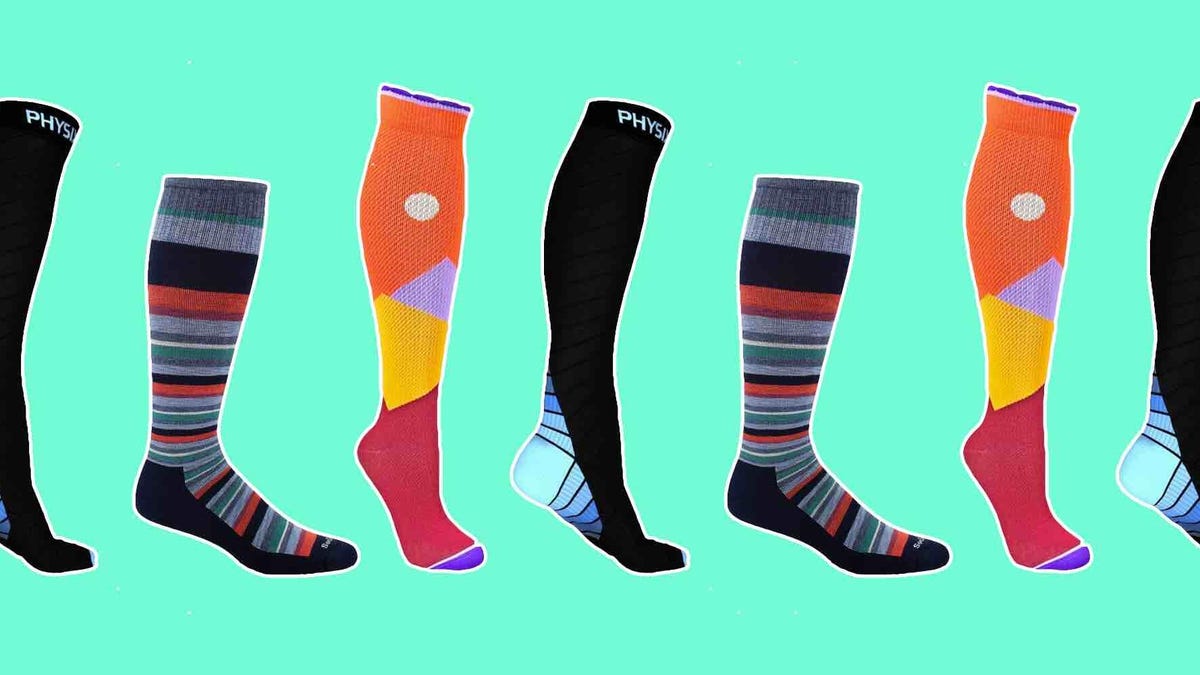Level of compression: Compression socks can offer mild compression, moderate compression, firm compression, extra firm or “severe” compression. This is measured in mmHg, a unit of pressure. Mild to firm compression socks are commonly sold over the counter, and are usually between 10 and 30 mmHg. They’re ideal for work, travel, sports or mild varicose veins.
Extra firm compression socks may go up to 50 mmHg or more, and these are recommended for more serious conditions like blood clots, medical recovery or severe varicose veins. Compression socks are also available by prescription.
Some compression socks come with graduated compression, with the tightest fit around the ankle and a looser fit higher up. These are popular because they can be more comfortable and easier to find the right fit.
Comfort: Ideally, your compression socks should feel like a gentle squeeze; if you feel any pain, numbness or tingling, they’re too tight. Consider whether the socks are made with a breathable fabric, if they have a seamless toe and any other comfort factor that you specifically require from your socks. Compression socks also come in various lengths, from ankle to waist-high.
Style: Like regular socks, compression socks come in different lengths, colors and styles. If you’ll be wearing them at work, for example, you might want a business-friendly look. Some compression socks are sheer and lightweight, while others are more opaque and sturdy.
Special uses: If you’re using compression socks for a medical issue, like to prevent blood clots after surgery, look for anti-embolism stockings rather than regular compression socks. Ask your doctor to help you choose the right kind. A professional can also prescribe prescription-grade compression socks, which will be specifically fitted to your measurements.
Price: Compression socks may come with sticker shock if you’re used to buying cheap socks, but you can still find more budget-friendly options if you need to.
Read the full article here


